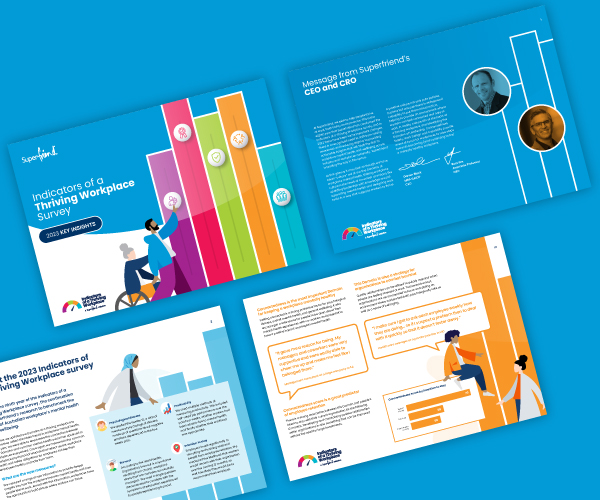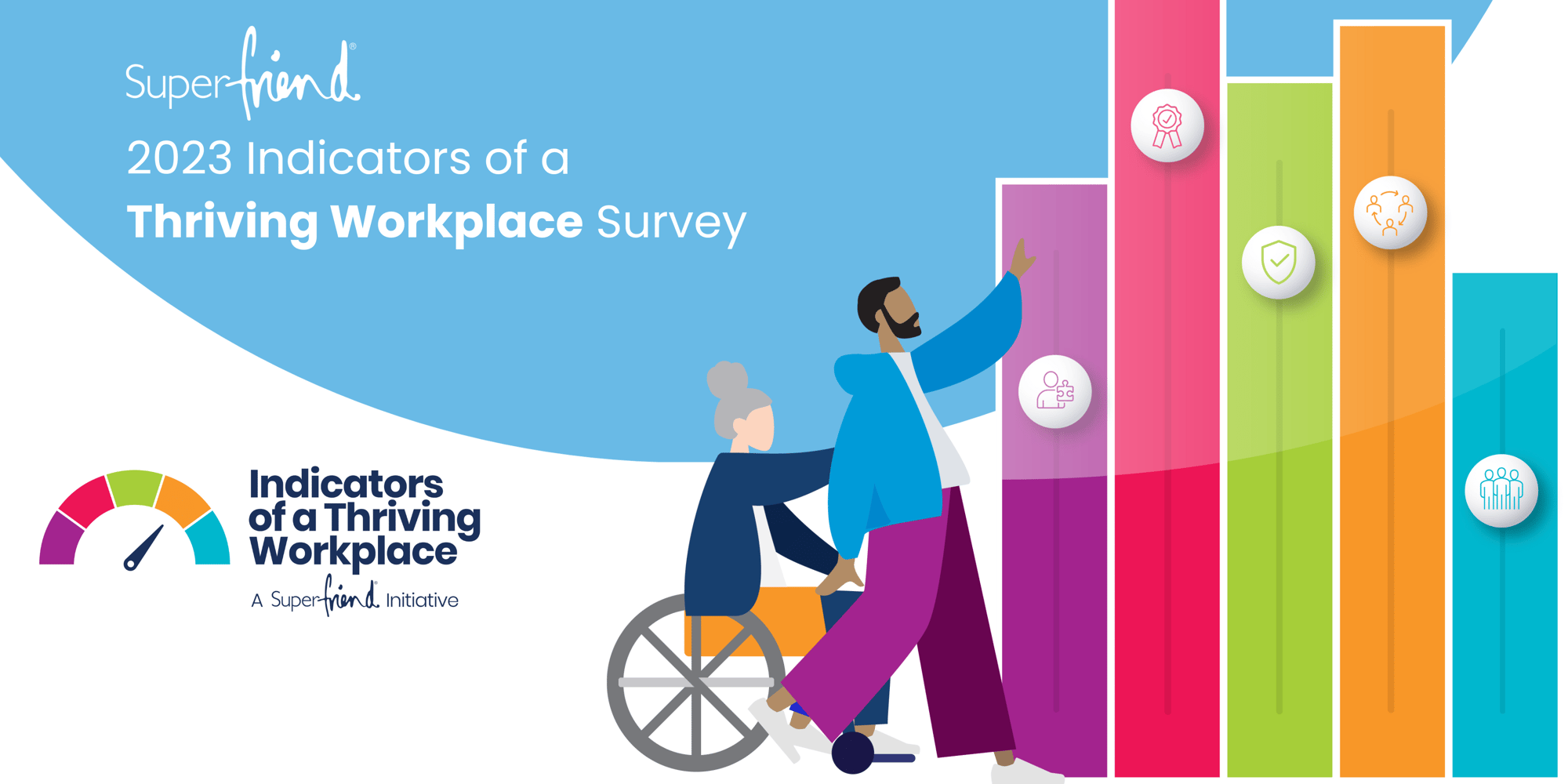Welcome to our ninth year of the Indicators of a Thriving Workplace,
Australia’s largest workplace mental health survey & statistics in 2023.

Workplace mental health statistics frequently highlight challenges and shortfalls. Often the focus can appear quite bleak and negative and may run the risk of failing to see the positive potential workplaces have, when it comes to quality of life, mental health in the workplace and wellbeing.
It’s important to understand how the workplace plays a role in how people are feeling, whether they take time off work and how productive they can be. Our 9th Annual Indicators of a Thriving Workplace Survey findings dive deep into psychological distress, burnout, and employer measures like productivity and retention.
Darren Black
CEO, SuperFriend

This latest 2023 report reveals how our 5 Domains, alongside Psychosocial Hazards, are connected to employee wellbeing and business outcomes. Higher scores in Work Design, Capability, Safety, Connectedness and Leadership (below) are reflected in lower levels of psychological distress for employees. There are also clear benefits for employers in terms of productivity, burnout and retention of talented staff.
We encourage you to download and read the latest and 9th edition of our key findings to pique your interest. Our data runs much deeper than this report and we welcome in-depth conversations about how SuperFriend’s research can guide action in your workplace to help people thrive at work, both today and tomorrow.
Dr Ross Iles
Chief Research Officer, SuperFriend
The 5 Domains and Psychosocial Hazards
Building a thriving workplace and culture
The 5 Domains
Making a thriving work place
Work Design
Work Design is the way that roles, tasks and responsibilities are organised. Stronger engagement occurs when workers are empowered to shape the way that they work. This promotes a balance between work and individual preferences.
Capability
Capability is about equipping the workplace with skills and resources to support mental health. It involves putting policies into action to minimise risks, respond to harm, and promote the positives that support good mental health and wellbeing for all.
Safety
Safety describes the processes put in action to protect personal safety so that workplaces are free from harassment, bullying, discrimination and violence. These processes provide proactive support and promote positive social interactions.
Connectedness
Connectedness refers to the quality of interpersonal relationships in the workplace. High quality connections are characterised by mutual respect, trust and collaboration. This can be seen when workers support each other to succeed and there is a sense of belonging.
Leadership
Leadership* comprises how managers enable their teams to achieve shared organisational goals. This includes modelling positive behaviours, providing feedback for growth and
nurturing a culture where
workers can utilise their strengths.
Psychosocial Hazards
Aspects of work that have the potential to cause psychological harm and may lead to physical harm.
Work Design
The way that roles, tasks and responsibilities are organised. Stronger engagement occurs when workers are empowered to shape the way that they work. This promotes a balance between work and individual preferences.
Capability
Equipping the workplace with skills and resources to support mental health. E.g. putting policies into action to minimise risks, respond to harm, and promote the positives that support good mental health and wellbeing for all.
Safety
The processes put in action to protect personal safety so that workplaces are free from harassment, bullying, discrimination and violence. These processes provide proactive support and promote positive social interactions.
Connectedness
The quality of interpersonal relationships in the workplace. High quality connections are characterised by mutual respect, trust and collaboration. This can be seen when workers support each other to succeed and there is a sense of belonging.
Leadership
How managers enable their teams to achieve shared organisational goals. This includes modelling positive behaviours, providing feedback for growth and
nurturing a culture where
workers can utilise their strengths.
Psychosocial Hazards
Aspects of work that have the potential to cause psychological harm and may lead to physical harm.
Impact
... Safety Score
... Harmful Experiences
Harmful experiences can include harassment, bullying, discrimination and violence. It's important for employers to spend time on improving their Capability and have measures in place to protect staff from psychosocial risk.
Helping workplaces thrive today and tomorrow.
Want to find
out more?
Download the Indicators of a Thriving Workplace Key Insights Report to gain valuable insights into the state of workplace mental health across Australia and within industries like education, healthcare, construction, hospitality, mining, retail, transport and more.You’ll uncover topics such as discrimination, vulnerable workers, psychosocial risks plus our five Domains for building a thriving workplace and culture.


